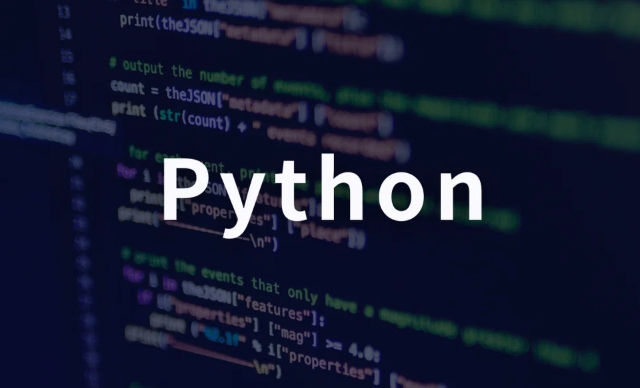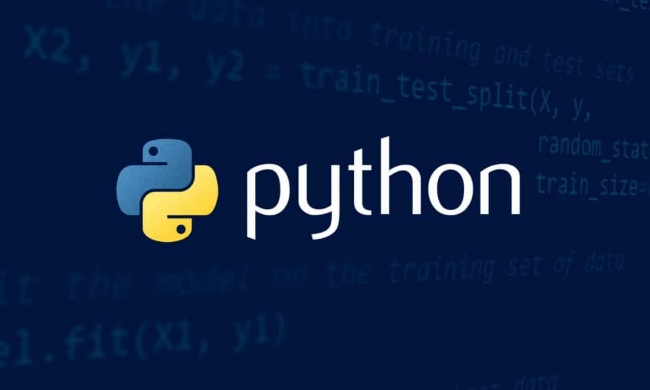The proxy mode is accessed through the intermediary control object and is suitable for delayed loading, permission control, remote call and other scenarios. 1. Delay loading: The agent creates real objects only when the first call is called, saving resources; 2. Permission control: The agent checks the user role and decides whether to allow access; 3. Remote call or logging: The agent encapsulates remote services or adds logs, performance monitoring and other functions; it can also simplify the proxy class implementation through __getattr__ to reduce boilerplate code.

When writing code in Python, sometimes you don’t want to operate an object directly, but instead want to add a layer of “mediation” in front of it. This is where the proxy pattern comes in. Its core idea is to control access to real objects through a proxy object . This approach is particularly practical in remote calls, permission control, delayed loading and other scenarios.

The following is based on several common usage scenarios and talk about how to use the proxy mode in Python.
1. Lazy Loading
Sometimes creating objects is expensive, such as loading large files or connecting to databases. You can create a proxy first and initialize the real object when it is really needed.

class HeavyObject:
def do_work(self):
print("High-duty tasks are being performed...")
class Proxy:
def __init__(self):
self._real_object = None
def do_work(self):
if self._real_object is None:
self._real_object = HeavyObject()
self._real_object.do_work()
# Use example proxy = Proxy()
proxy.do_work() # Only the first time the object will be created and executedThis way can save resources, especially if you are not sure whether that object will be used.
2. Control access rights
If you want some users to only access the function of an object under specific conditions, you can use a proxy to do permission checks.

class RealService:
def access_data(self):
print("Accessing sensitive data...")
class AccessProxy:
def __init__(self, user_role):
self._real_service = RealService()
self.user_role = user_role
def access_data(self):
if self.user_role == "admin":
self._real_service.access_data()
else:
print("Insufficient permissions, unaccessible")
# Use example user_proxy = AccessProxy("guest")
user_proxy.access_data() # Output permission is insufficient admin_proxy = AccessProxy("admin")
admin_proxy.access_data() # Normal access- If you are working in a web backend, this kind of proxy can be used as an intermediate layer to intercept requests.
- Combined with the decorator mechanism of Flask or Django, access control can be more elegantly.
3. Remote call or logging
The proxy can also be used to encapsulate remote service calls (such as RPC), and can also be used to record call logs and count time-consuming auxiliary functions.
class RemoteService:
def call(self):
print("Remote interface is being called...")
class LoggingProxy:
def __init__(self):
self._service = RemoteService()
def call(self):
print("Login logging before starting call")
self._service.call()
print("Call completed, logged")
# Use example proxy = LoggingProxy()
proxy.call()This structure is very suitable for plug-in and unplugged development. For example, if you want to temporarily add performance monitoring but don’t want to change the original logic, you can use the proxy to package the first layer.
Tips: Use __getattr__ to simplify the proxy class
If there are many ways to proxy objects, it is very troublesome to write and forward one by one. You can use __getattr__ to automatically transfer attribute access to internal objects.
class SimpleProxy:
def __init__(self, target):
self._target = target
def __getattr__(self, name):
return getattr(self._target, name)
# Example target = RealService()
proxy = SimpleProxy(target)
proxy.access_data() # Directly call the RealService methodThis trick is very useful when encapsulating third-party libraries or writing general agents, and can reduce a lot of boilerplate code.
Basically that's it. The proxy mode seems simple, but if used properly, it will make the code structure clearer and easier to expand and maintain. The key is to understand when to add a layer of "middleman" - when you find that the use of an object requires additional control or packaging, the agent is a good choice.
The above is the detailed content of Proxy Pattern in Python. For more information, please follow other related articles on the PHP Chinese website!

Hot AI Tools

Undress AI Tool
Undress images for free

Undresser.AI Undress
AI-powered app for creating realistic nude photos

AI Clothes Remover
Online AI tool for removing clothes from photos.

Clothoff.io
AI clothes remover

Video Face Swap
Swap faces in any video effortlessly with our completely free AI face swap tool!

Hot Article

Hot Tools

Notepad++7.3.1
Easy-to-use and free code editor

SublimeText3 Chinese version
Chinese version, very easy to use

Zend Studio 13.0.1
Powerful PHP integrated development environment

Dreamweaver CS6
Visual web development tools

SublimeText3 Mac version
God-level code editing software (SublimeText3)
 PHP calls AI intelligent voice assistant PHP voice interaction system construction
Jul 25, 2025 pm 08:45 PM
PHP calls AI intelligent voice assistant PHP voice interaction system construction
Jul 25, 2025 pm 08:45 PM
User voice input is captured and sent to the PHP backend through the MediaRecorder API of the front-end JavaScript; 2. PHP saves the audio as a temporary file and calls STTAPI (such as Google or Baidu voice recognition) to convert it into text; 3. PHP sends the text to an AI service (such as OpenAIGPT) to obtain intelligent reply; 4. PHP then calls TTSAPI (such as Baidu or Google voice synthesis) to convert the reply to a voice file; 5. PHP streams the voice file back to the front-end to play, completing interaction. The entire process is dominated by PHP to ensure seamless connection between all links.
 How to use PHP combined with AI to achieve text error correction PHP syntax detection and optimization
Jul 25, 2025 pm 08:57 PM
How to use PHP combined with AI to achieve text error correction PHP syntax detection and optimization
Jul 25, 2025 pm 08:57 PM
To realize text error correction and syntax optimization with AI, you need to follow the following steps: 1. Select a suitable AI model or API, such as Baidu, Tencent API or open source NLP library; 2. Call the API through PHP's curl or Guzzle and process the return results; 3. Display error correction information in the application and allow users to choose whether to adopt it; 4. Use php-l and PHP_CodeSniffer for syntax detection and code optimization; 5. Continuously collect feedback and update the model or rules to improve the effect. When choosing AIAPI, focus on evaluating accuracy, response speed, price and support for PHP. Code optimization should follow PSR specifications, use cache reasonably, avoid circular queries, review code regularly, and use X
 python seaborn jointplot example
Jul 26, 2025 am 08:11 AM
python seaborn jointplot example
Jul 26, 2025 am 08:11 AM
Use Seaborn's jointplot to quickly visualize the relationship and distribution between two variables; 2. The basic scatter plot is implemented by sns.jointplot(data=tips,x="total_bill",y="tip",kind="scatter"), the center is a scatter plot, and the histogram is displayed on the upper and lower and right sides; 3. Add regression lines and density information to a kind="reg", and combine marginal_kws to set the edge plot style; 4. When the data volume is large, it is recommended to use "hex"
 PHP integrated AI emotional computing technology PHP user feedback intelligent analysis
Jul 25, 2025 pm 06:54 PM
PHP integrated AI emotional computing technology PHP user feedback intelligent analysis
Jul 25, 2025 pm 06:54 PM
To integrate AI sentiment computing technology into PHP applications, the core is to use cloud services AIAPI (such as Google, AWS, and Azure) for sentiment analysis, send text through HTTP requests and parse returned JSON results, and store emotional data into the database, thereby realizing automated processing and data insights of user feedback. The specific steps include: 1. Select a suitable AI sentiment analysis API, considering accuracy, cost, language support and integration complexity; 2. Use Guzzle or curl to send requests, store sentiment scores, labels, and intensity information; 3. Build a visual dashboard to support priority sorting, trend analysis, product iteration direction and user segmentation; 4. Respond to technical challenges, such as API call restrictions and numbers
 python list to string conversion example
Jul 26, 2025 am 08:00 AM
python list to string conversion example
Jul 26, 2025 am 08:00 AM
String lists can be merged with join() method, such as ''.join(words) to get "HelloworldfromPython"; 2. Number lists must be converted to strings with map(str, numbers) or [str(x)forxinnumbers] before joining; 3. Any type list can be directly converted to strings with brackets and quotes, suitable for debugging; 4. Custom formats can be implemented by generator expressions combined with join(), such as '|'.join(f"[{item}]"foriteminitems) output"[a]|[
 python pandas melt example
Jul 27, 2025 am 02:48 AM
python pandas melt example
Jul 27, 2025 am 02:48 AM
pandas.melt() is used to convert wide format data into long format. The answer is to define new column names by specifying id_vars retain the identification column, value_vars select the column to be melted, var_name and value_name, 1.id_vars='Name' means that the Name column remains unchanged, 2.value_vars=['Math','English','Science'] specifies the column to be melted, 3.var_name='Subject' sets the new column name of the original column name, 4.value_name='Score' sets the new column name of the original value, and finally generates three columns including Name, Subject and Score.
 Optimizing Python for Memory-Bound Operations
Jul 28, 2025 am 03:22 AM
Optimizing Python for Memory-Bound Operations
Jul 28, 2025 am 03:22 AM
Pythoncanbeoptimizedformemory-boundoperationsbyreducingoverheadthroughgenerators,efficientdatastructures,andmanagingobjectlifetimes.First,usegeneratorsinsteadofliststoprocesslargedatasetsoneitematatime,avoidingloadingeverythingintomemory.Second,choos
 python connect to sql server pyodbc example
Jul 30, 2025 am 02:53 AM
python connect to sql server pyodbc example
Jul 30, 2025 am 02:53 AM
Install pyodbc: Use the pipinstallpyodbc command to install the library; 2. Connect SQLServer: Use the connection string containing DRIVER, SERVER, DATABASE, UID/PWD or Trusted_Connection through the pyodbc.connect() method, and support SQL authentication or Windows authentication respectively; 3. Check the installed driver: Run pyodbc.drivers() and filter the driver name containing 'SQLServer' to ensure that the correct driver name is used such as 'ODBCDriver17 for SQLServer'; 4. Key parameters of the connection string






